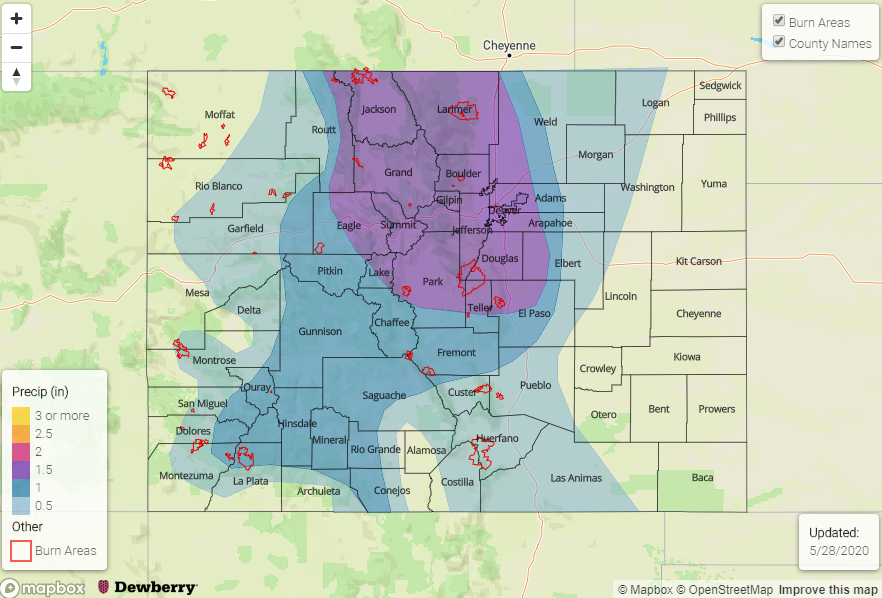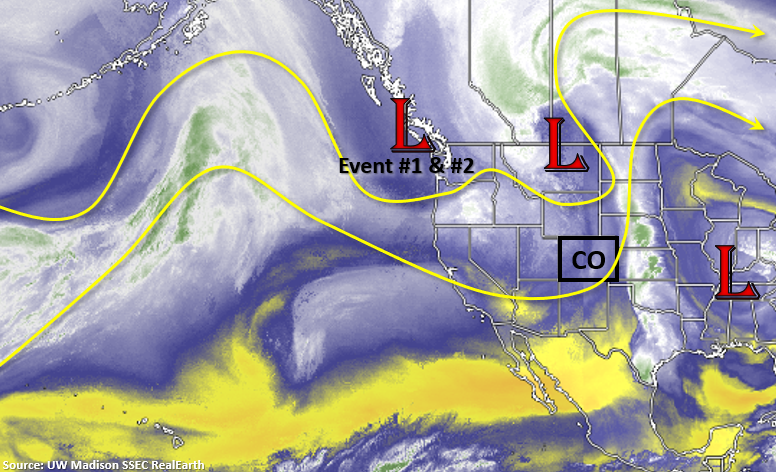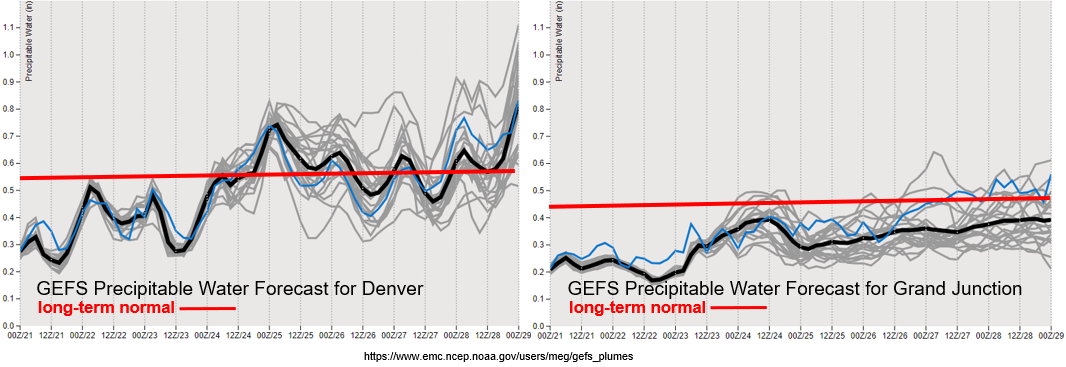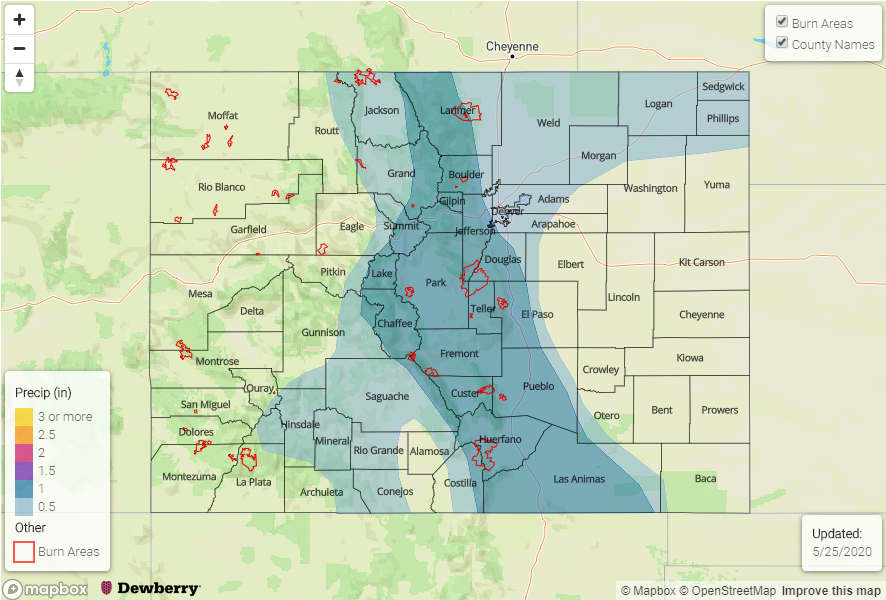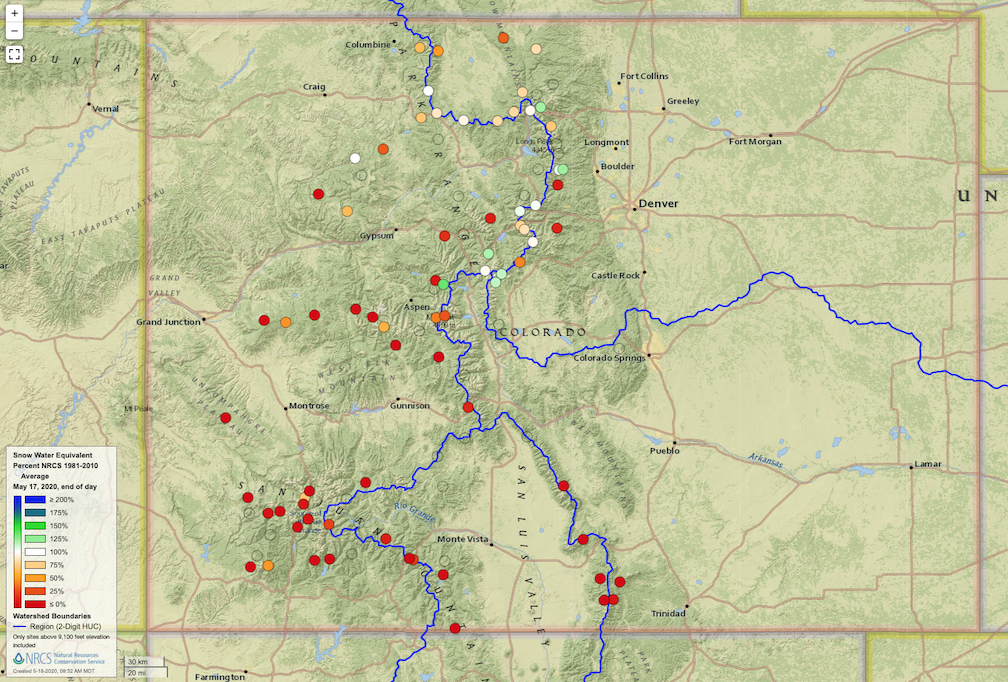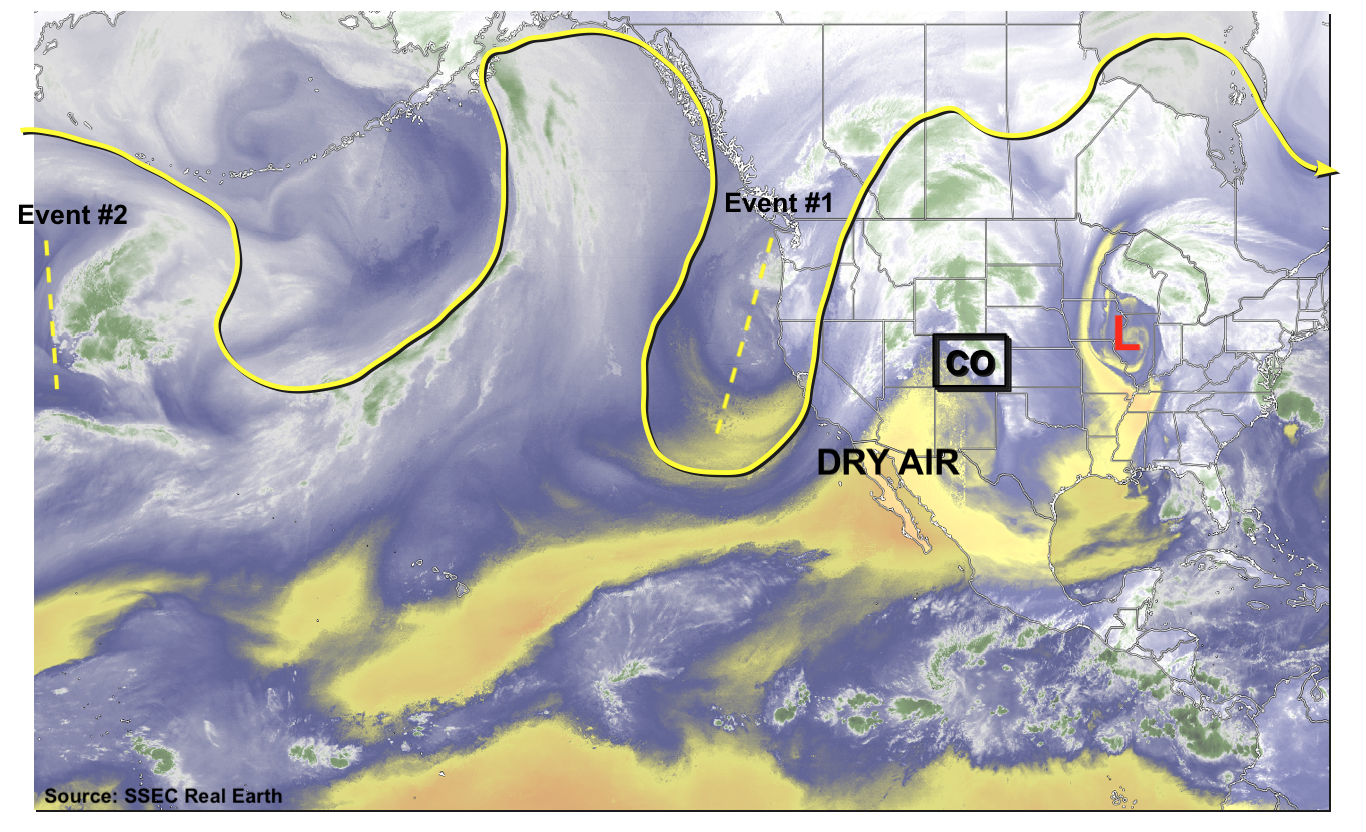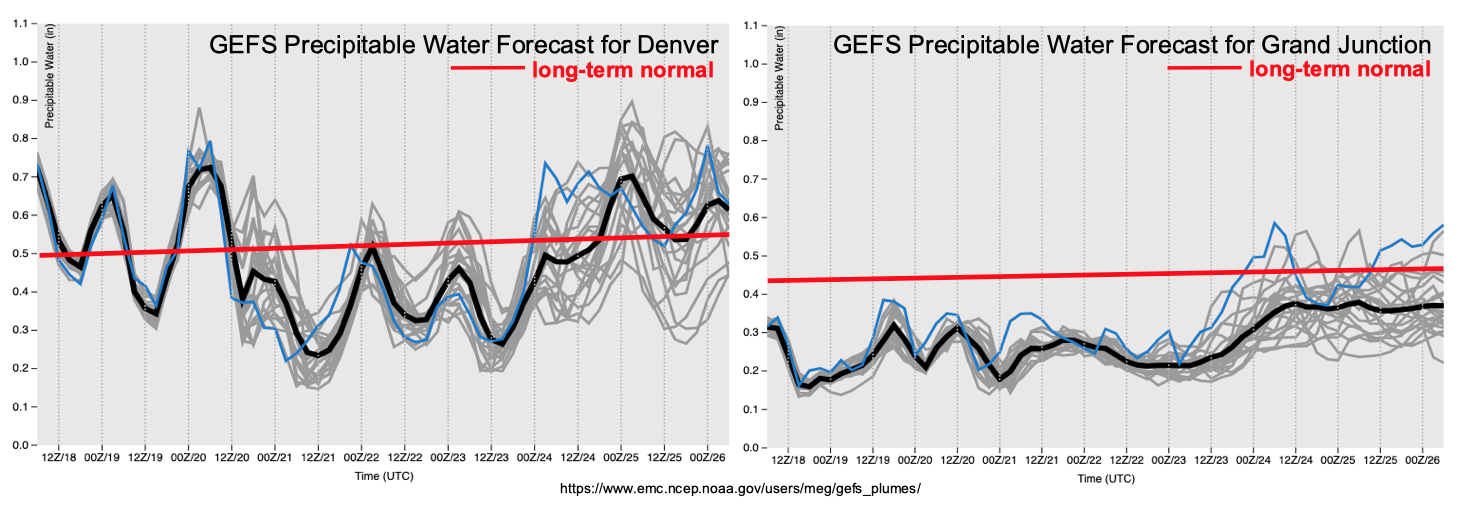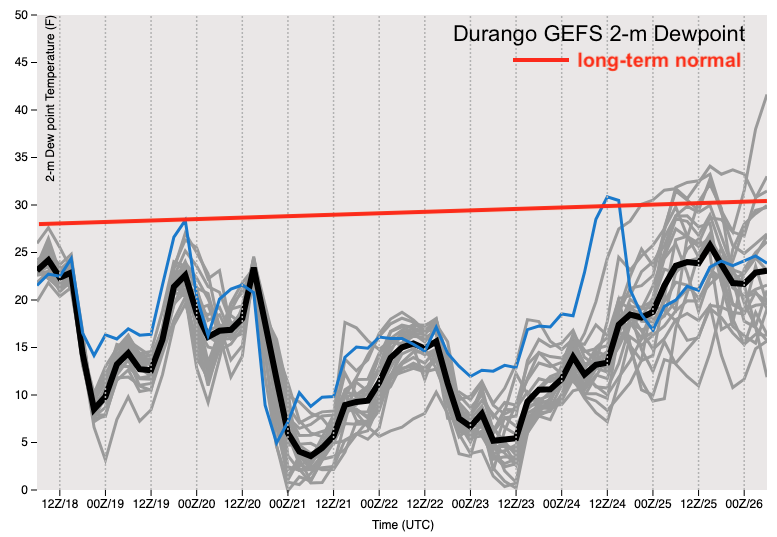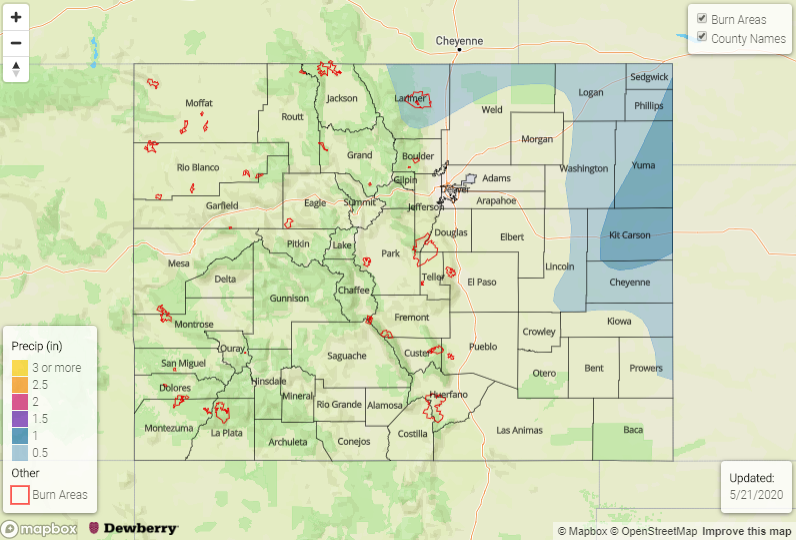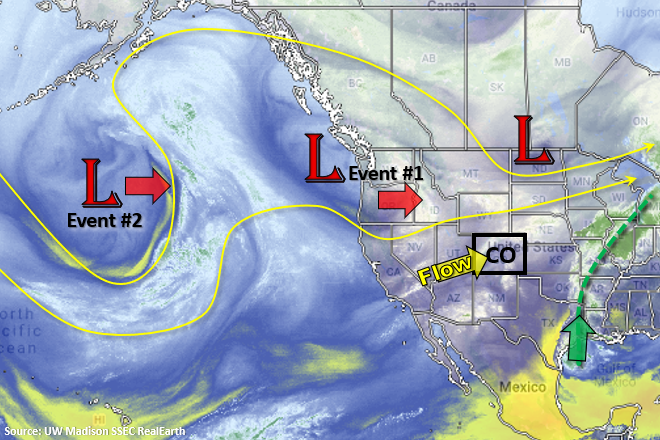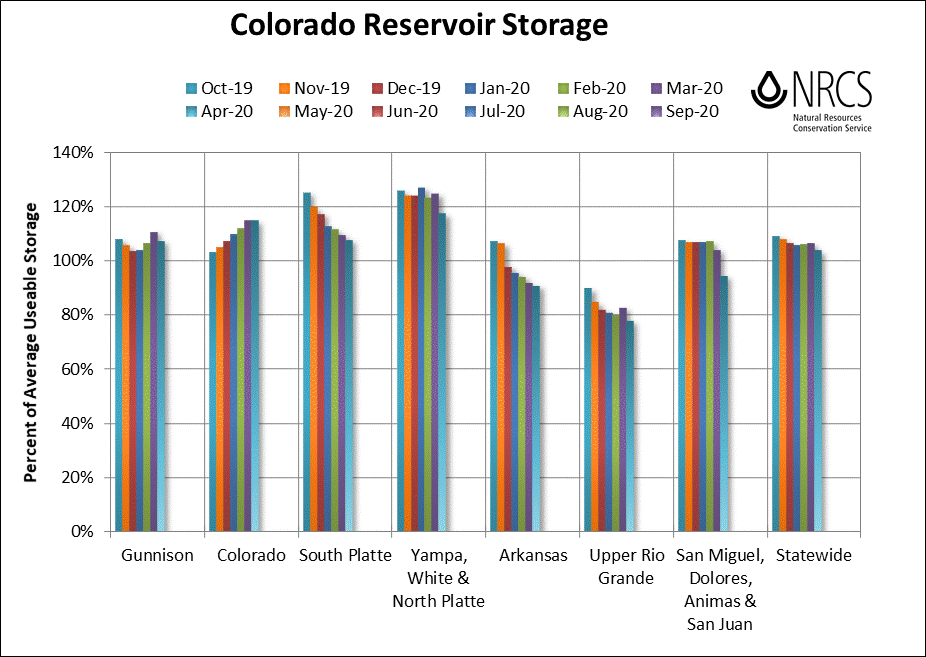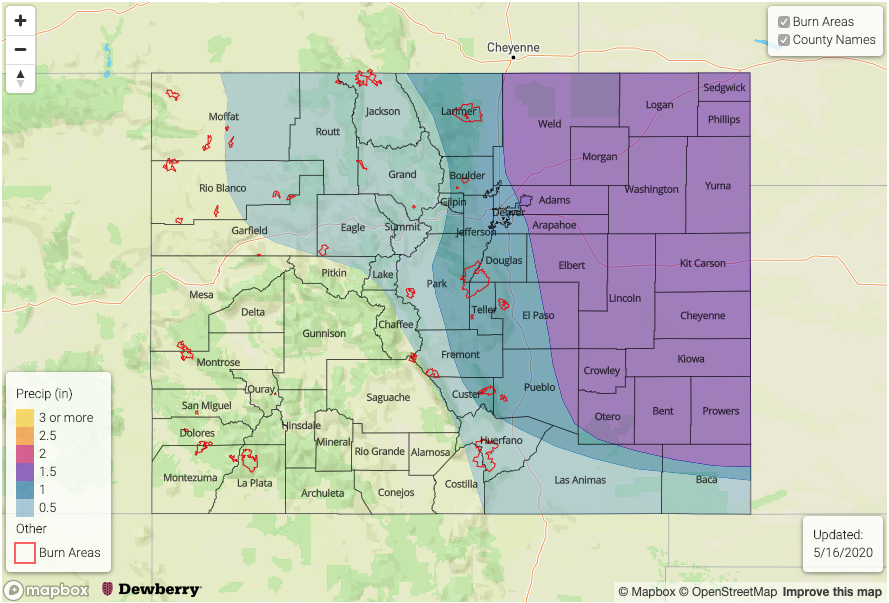Issue Date: Monday, May 25th, 2020
Issue Time: 1:25PM MDT
Valid Dates: 5/26 – 6/9

There will be a break from storms on Tuesday before a fairly active rainfall pattern returns to the state through the start of next week. Event #1 begins as the Low to our north moves southeast and allows some mid-level vorticity to slide into the state with northwest flow aloft. Event #2 begins immediately after when the low off the coast of Mexico helps set up an omega pattern, which will place Colorado under the influence of a highly amplified ridge. This will return hot temperatures to the state by next weekend, and decent moisture could work its way up from the south over the as the ridge axis is slightly shifted eastward. Thus, the Elevated flood threat for next weekend.
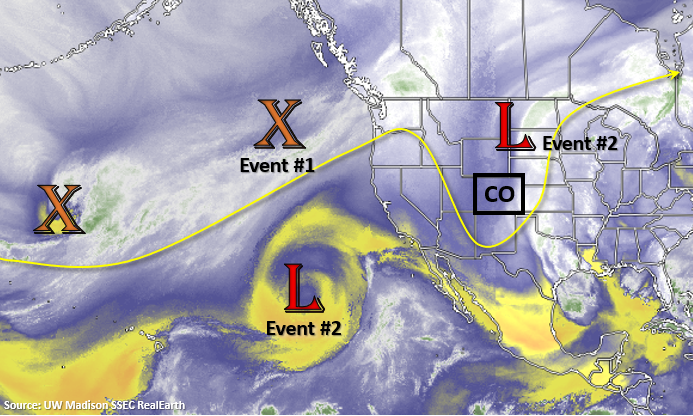
Moisture has a strong return by Tuesday (west) and Wednesday (east) as seen in the PW plumes below. This is particularly true for eastern Colorado where PW increases about three-quarters of an inch in a 36-hour span. Looks like Wednesday could get interesting in regards to rainfall with PW close to an inch, so we’ll be watching the timing of the shortwave passage closely in the daily FTB. Moisture levels stay above average over eastern Colorado through Monday, thus the increase in chances in rainfall for this FTO. Over western Colorado, PW values are slightly less, but are still above climatology through next weekend. This should help lessen fire concerns along with calmer surface winds under the ridge, and bring scattered afternoon storms back into the forecast for the higher terrains. Really hoping the aforementioned moisture surge from the Gulf of Mexico happens for the southwest corner of the state and San Luis Valley region.

It looks like southern Colorado will reach complete melt out at gauged SNOTEL stations by tomorrow. Over northern Colorado, there could be another rise in water heights later this week with those hot, summer-like temperatures and increase rainfall chances. Not expecting any large-scale flooding, but low-lying areas and small creeks will likely be at bankfull conditions. Also, forecasts indicate the Yampa will be on the rise again with Elk River near Milner coming close to Action levels by next weekend.
Event #1: Wednesday – Thursday (5/27-5/28)
No Apparent Threat as moisture and dynamics return to the state with a passing shortwave.
A cold front looks to drop through the state behind a shortwave sometime on Wednesday night. Depending on timing, this could cause some heavy rainfall and severe weather for eastern Colorado with the main threats being strong winds and hail. However, good upper level dynamics remain to our north, so coverage is not expected to be widespread. As far as rainfall, right now, it’s looking like it is mostly a rainfall event for northeast Colorado and the Palmer Ridge; however, scattered storms will also be likely return to the Northwest Slope, Northern and Central Mountains as well. Overnight rainfall may linger over the plains. Storms should be moving fast enough during the afternoon hours that widespread flooding is not anticipated, thus the No Apparent flood threat.
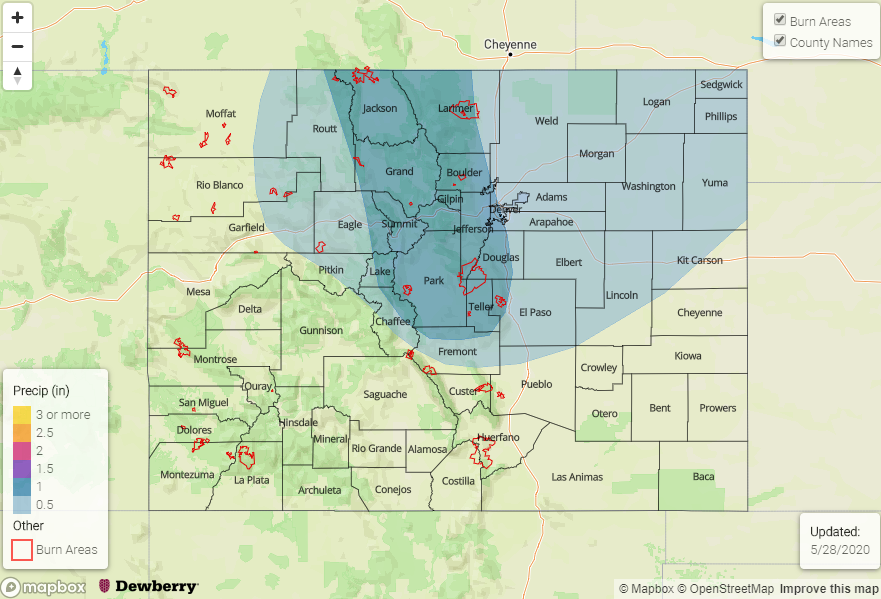
Event #2: Friday – Monday (5/29–6/1)
Elevated Threat as amplified ridge sets up over the state and allows Gulf of Mexico moisture to be advected northward.
This will be an interesting omega-like pattern for Event #2. Should the ridge axis set up nicely (slightly to our east) over a two-day period, rainfall could be widespread across the mountains – including southwestern Colorado. This would be very beneficial for the dry soils, worsening drought and early season melt out. Without much upper level dynamics in play, severe storms are not likely over the eastern plains, but the adjacent eastern plains could also see some decent rainfall with slower storm motions forecast. The Elevated Threat right now is mostly for recent burn areas, and details will likely change by Thursday’s FTO.
